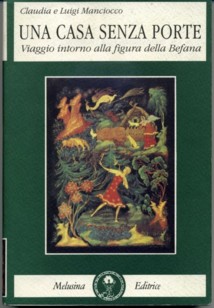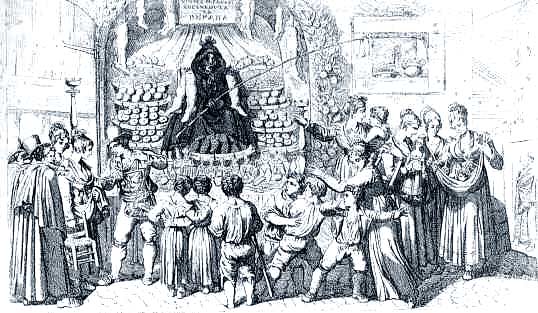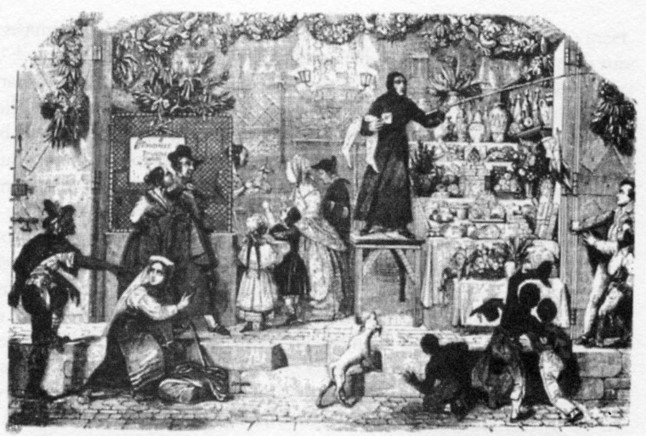A JOURNEY AROUND THE FIGURE OF THE BEFANA
by Claudia and Luigi Manciocco

This book [House Without A Door] is dedicated to the legend of the Befana, who has had an important role in the imagination of children. It is not, however, a book for children even if the child’s world, the magic sphere, the mysteries and games of childhood, the fables and fantasy are recurring themes. Those who wish to relive with us the magic of the first wonders of infancy, and understand the meaning and origins of this extraordinary figure should be prepared to undertake a long voyage that will carry us back in time, to the origins of man’s history. We’ll discover what makes this personage so mysterious and arcane, because this little old lady so dear to children has continued to fascinate them for centuries, and they still await her arrival on the night of her holiday.
It’s possible to demonstrate historically through archeological and anthropological statistics how archaic traces of civilization were conserved in the traditions of the Mediterranean world and survive through the form of images and symbols regarding mythic figures, such as that of the Befana. Some images connected to the figure of the Befana are revealed in an archaic agricultural context when the homes became stable and the cult of domestic folklore was established.

Befana sitting amidst the harvest – by Bartolomeo Pinelli, 1825
In Neolithic culture the houses of villages in Anatolia (Catal Huyuk) and other places had neither windows nor doors; the only entrance was through the wide, horizontal roof. The house was entered by a ladder, which was then withdrawn in a defensive action. The Befana arrived in the homes through the chimney, an act that in the myths throughout the world is attributed to mythic figures, as for example, the spirits of the Montagnais Indians in North America, and above all the Nitu Natmate, ancestral spirits of the Papua‑melanesiani, as well as other figures who bring gifts during the Christmas holidays.
Once the link between the figure of the Befana and the ancestral spirits is established the Befana presents herself during the big holiday as a mythical ancestress who returns yearly. Her principal function is that of reaffirming the bond between the family and the ancestors through an exchange of gifts. The children receive gifts symbolizing archaic civilizations where they were considered the representatives of the ancestors, to whom the offerings were destined, as shown by Levy‑Bruhl in the structure of the new years’ eve festivities in Bering (see page 204, A House Without a Door). Sometimes the Befana receives offers of food. In the popular dramatization in Tuscany and elsewhere the Befana is a masked figure who guides the cortege of postulants and receives offers from families who, in kind, receive from her the gift of prosperity.

Befana dispensing gifts suspended from a fennel stalk – by Bartolomeo Pinelli, 1825
The Befana occupies a pedagogical function of an outside educator who rewards or punishes, and has an important role in the child’s development. This Big Grandmother presided over the various phases of the life of the child and of initiation rites, which took place during the festivities of the New Year. (See chapter 4, the Magical Night, with enclosed bibliography).
Regarding the stocking hung up on the chimney, she is not only the container of gifts or of offerings of food but is herself a gift, inasmuch as a manual product dedicated to mythical figures that are patrons of yarns and weaving, close to the Befana, such as Frau Holda and Berchta who visit homes during the Christmas period. The stocking may also have evocative functions. (see A House Without a Door, chapter IV, page 5).

